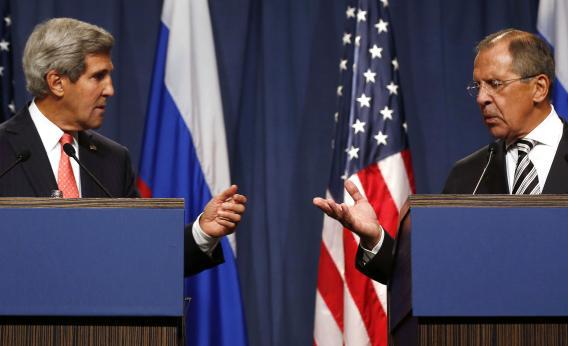An article by Walter Pincus in today’s Washington Post, contradicts the prevailing storyline that that the current deal for the removal of Syria’s chemical weapons emerged out of John Kerry’s accidental diplomacy. (It’s not the first suggestion of this.)
According to the article, the initiative “had its roots in June 2012 talks between President Obama and Russian President Vladimir Putin about Bashar al-Assad’s arsenal” and was developed in continuing talks between Kerry and Russian Foreign Minister Sergei Lavrov.
But I’m not sure this is actually reassuring about the chances of the arsenal actually being removed. For one thing, the article reports that Kerry and Lavrov “talked about the possibility of using Libya as a model for removing Syria’s chemical stockpile under an international agreement.”
That’s not a great model! The dismantling of Libya’s arsenal under the supervision of the Organization for the Prevention of Chemical Weapons has taken years and had to be suspended during the 2011 civil war when inspectors left the country. Moreover, it turned out that Qaddafi hadn’t declared all of his weapons and more were discovered after the fighting was over. Nine years later, only about half of the country’s weapons and precursor elements have been destroyed.
The article also suggests that the three-day U.N.-OPCW mission that confirmed the Aug. 21 attack could be a model for how inspectors could operate in a war zone. According to the mission’s report, the inspectors reached an agreement with the Syrian government and rebel groups for “a temporary ceasefire . . . put effectively in place for five hours daily between Aug. 26 and 29.”
But that ceasefire didn’t actually hold. On Aug. 26, “The first vehicle of the Chemical Weapons Investigation Team was deliberately shot at multiple times by unidentified snipers in the buffer zone area.”
This timeline also suggests that while the U.S. and Russian technical experts were already in discussions about how to remove Syria’s chemical weapons capability, the worst chemical weapons attack in 25 years happened in Damascus.
Somehow I felt better when I thought they had just stumbled into this.
